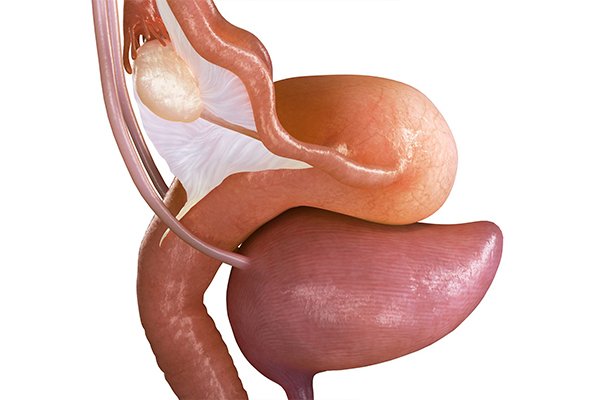Most boys and girls are born with genitals that look normal and work well. But some children are born with a condition called epispadias. Epispadias can produce a penis or urethra that don’t work well or look normal.Epispadias is a rare congenital (present at birth) abnormality that involves the opening of the urethra (the tube from which urine exit the bladder). Normally, the opening of the urethra (the “meatus”) is at the tip of the penis. But in boys with epispadias, it’s on top of the penis. In girls with epispadias, the urethral opening is towards the clitoris or even belly area. This results in the external genitalia and urethra not forming or functioning well.
Causes
The way the organs form in a baby during pregnancy is very complicated. Certain steps must occur in a finely timed order. Most often, if there is one defect in an organ, there will also be other defects. Only rarely does epispadias occur alone. There will also often be issues with the bladder. In rare cases, there can also be defects in the large intestine.
The manner in whichepispadias affects the genitals varies. In some boys, it can be just a small dimple on the tip of the penis above the normal urethral opening. With girls, it could be a double clitoris. If the urethra or bladder is involved, the epispadias is usually more severe. This large range of issues is called the exstrophy-epispadias complex.
Classification
The epispadias is classified based on the location of the meatus on the penis.
- Glanularepispadias: It is found on the head of the penis
- Penile epispadias: It is found along the shaft of the penis
- Penopubicepispadias: it is found or near the pubic bone
The position of the meatus can help predict how well the bladder stores urine. If the meatus is close to the base of the penis (and the abdominal wall), the bladder sphincter is likely affected and it won’t hold urine.
In most cases of penopubicepispadias, the bones of the pelvis don’t come together in the front. The bladder sphincter doesn’t close all the way as a result of which urine leaks out. Most boys with penopubicepispadias, and about 2 of 3 with penile epispadias leak urine with stress like coughing and strenuous effort. Most will need to have the bladder neck fixed with surgery.
Almost all boys with glanularepispadias have a good bladder neck. They can hold urine and toilet train normally. Still, the bend and abnormal opening of the penis will need to be fixed with surgery
Girls with epispadias likely leak urine with stress like coughing and strenuous effort. In most cases, early surgical treatment can fix these problems.
Complications
Boys with penopubicepispadias or the exstrophy-epispadias complex may be infertile. In normal young men, the bladder neck is closed when sperm moves from the testicles to the urethra during ejaculation. In some men with this birth defect, the bladder neck may not close completely during ejaculation. This allows the sperm to move backwards into the bladder (retrograde ejaculation). This may cause problems when a couple is trying to have children. Some of these men may have poor sperm quality. Also, bending and a short, stubby penis can make it hard to have intercourse. Often, surgical repair can reduce these problems.
Females with epispadias usually aren’t at risk for infertility, since their internal organs are normal.
Symptoms
Most cases of epispadias are diagnosed at birth during physical examination of the newborn. In mild cases of epispadias, the condition can go unnoticed until parents note urine leaks after potty training.
Diagnosis
Epispadias is most often noticed at birth. If the defect is mild, it might not be noticed at first. In some cases, it might not be noticed until the child has been toilet trained and presents with urine leak. This is most common with girls.
Treatment
The main goal of treatment is to make the genitals look and work as normally as possible. This is ideally done with the fewest number of surgeries.Many leading reconstructive surgeons recommend epispadias repair as early as possible. This is especially true for boys with penopubic or penile epispadias and all girls with the condition. When treated early, bladder capacity can often be improved. A well-developed bladder is important for good urinary control. Early bladder filling and emptying (cycling) can help strengthen the growing bladder. If surgery is done within the first few months of life, the child may have a better chance of having a normal bladder.
Surgery Options for Boys
The main goals of epispadias treatment for boys are to:
- Make sure the penis works
- Fix bends in the penis (dorsal bend and chordee)
- Make the penis a good length
- Make the penis look normal
If the bladder and bladder neck are affected, surgery will be needed to make sure the child can control his urine. Surgery might also be needed to preserve fertility.
Sometimes, boys with the exstrophy-epispadias complex are born with a very underdeveloped penis. In these cases, surgery requires more skill and experience.
Surgery Options for Girls
Reconstruction in girls is less complex than in boys. The urethra and vagina may be short and near the front of the body. The clitoris may be in 2 parts. The internal female structures – uterus, fallopian tubes, and ovaries – are usually normal.
If diagnosed at birth, the 2 parts of the clitoris can be brought together and the urethra can be placed in the normal position. If repaired early enough, lack of urinary control (incontinence) may not be a problem.
If the problem isn’t diagnosed early or early repair isn’t done, then incontinence can be surgically corrected when it’s discovered. If the vaginal opening is narrow in older girls or younger women, reconstruction can be done after puberty.

